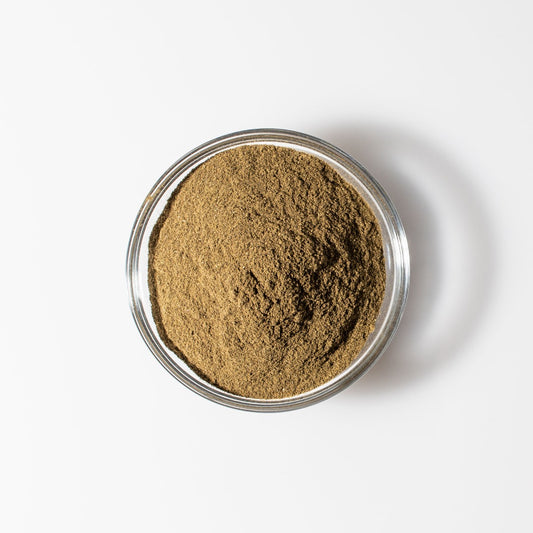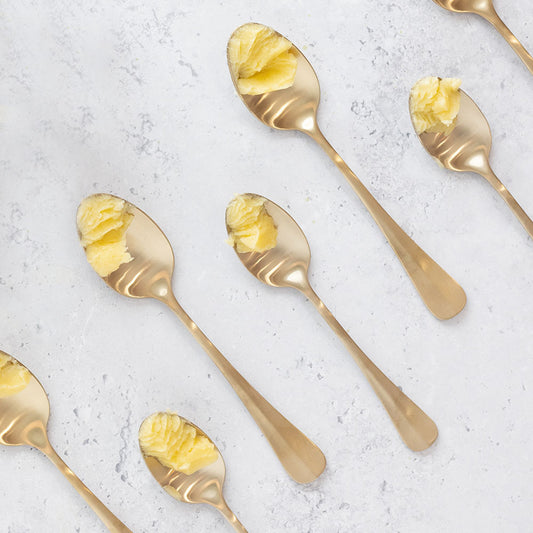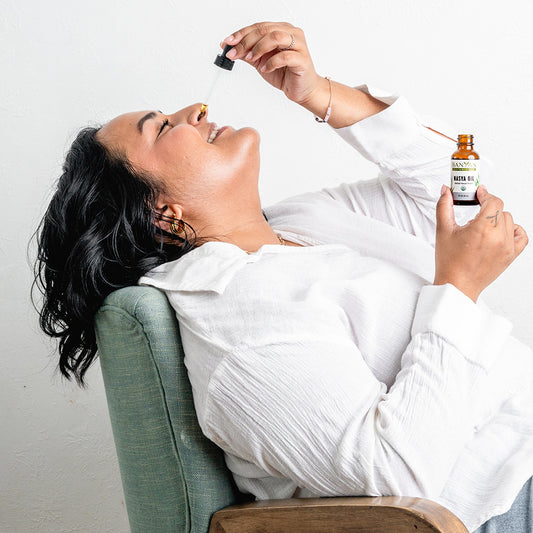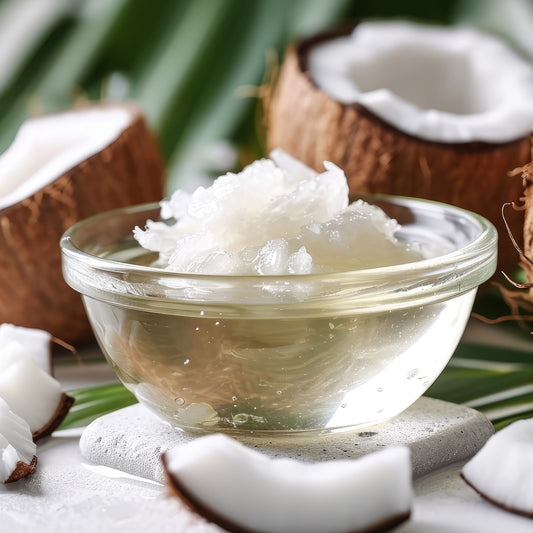Surrender and Serenity
A Guide to Balancing Anger with Ayurveda

Do you struggle with anger or frequent irritability? These are both expressions of excess pitta in mano vaha srotas (the channel of the mind). Balanced pitta in the mind is credited with a number of positive mental and emotional capacities like willpower, courage, confidence, contentment, satisfaction, enthusiasm, cooperation, acceptance, and surrender.
However, when aggravated pitta accumulates in the channel of the mind, it tends to cause accumulating heat—which can lead to anger, irritability, and other fiery emotions like envy, criticism, and excessive ambition.
We will start by exploring how these imbalances occur in the first place, but the purpose of this article is to offer practical guidance on how to support a return to balance so that we can reclaim health and vitality through the mental and emotional spheres.
If the channel of the mind is a new concept for you, you might appreciate reading The Channel of the Mind: Ayurveda and the Mind-Body Connection as a foundation for what follows.
Like Increases Like
Ayurveda operates on the premise that like increases like, and that opposites balance. Pitta dosha is naturally light, hot, sharp (or penetrating), oily, liquid, spreading, subtle, and clear. Therefore, exposure to these qualities—whether through our diets, lifestyle habits, relationships, or experiences—tends to increase pitta.
On the other hand, pitta is balanced by foods and experiences that are heavy, nourishing, substantive, cool (even cold), dry, stabilizing, and concrete (or tangible) in nature.
Balancing Anger
Anger and irritability are among the most classic expressions of excess pitta, and these imbalances are particularly likely to be triggered by excesses in the hot, sharp, and spreading qualities.
Therefore, using diet, lifestyle, and supportive herbs to increase our exposure to cool, slow, and stabilizing influences will generally serve to relieve anger and irritability. These qualities help balance excess heat while softening, grounding, and containing pitta's intensity.
A Supportive Diet
Learning to eat a balanced diet can sometimes feel overwhelming, but it doesn't have to be. And when it comes to anger and irritability, a pitta-pacifying diet that prevents the accumulation of excess heat in the body is one of the most potent therapies around.
In particular, it is important to avoid hot, spicy foods (e.g., cayenne pepper, chilies, etc.), very sour or acidic foods (like pickles or vinegar), citrus fruits, fermented foods, alcohol, and caffeine.1 These foods simply tend to be too intense, heating, and pitta-aggravating.
Instead, the diet should be soothing, nourishing, and grounding, favoring foods that are simple, energetically cooling, and relatively bland. This fare can be complemented by cool drinks, which are ideally taken between meals.
- Favor the sweet, bitter, and astringent tastes.
- Minimize the sour, salty, and pungent (spicy) tastes.
- Focus on creating meals from healthy, whole foods, while minimizing processed foods, stimulants, and refined sugars.
For more detailed guidance, please see Banyan's list of specific foods to favor and avoid when following a pitta-pacifying diet.
| Chamomile Tulsi Rose Tea |
|
Ingredients:
|
| This tea is soothing, calming to the mind, and deeply pitta-pacifying. Steep ½ teaspoon of the herbal mixture in a cup of recently boiled water for about ten minutes, cool, and enjoy (either warm or at room temperature) three times per day, after meals.2 |
Supportive Lifestyle Habits
Lifestyle therapies provide a powerful means of soothing pitta. The fact that pitta is subtle by nature means that it is rather easily impacted by subtle energies—especially when the imbalance is affecting a subtle channel like that of the mind.
Even small adjustments in our lifestyle habits can often serve to quickly and efficiently pacify elevated pitta.
The following lifestyle habits are particularly adept at soothing (and eliminating) elevated pitta in the mind.
A Daily Routine
Nearly everywhere we look in nature, there are creatures engaging in some sort of consistent daily routine that is deeply influenced by the rhythms of nature—the rising and setting of the sun, the cycles of the seasons, and the underlying impulses directing the broader community of life. While there is often some degree of seasonal variation, many plants and animals embrace a predictable daily rhythm and, as a rule, live by it.
As humans, we have largely gotten away from this habit. We engage with life at all hours of the day and night, and many of us have jobs and other obligations that require us to keep irregular schedules.
But at the most fundamental level, our physiology is very much adapted to—and supported by—some sense of regularity. Actually, this is precisely why the daily routine is such an effective therapy for anger and irritability.
The routine itself has a very grounding and stabilizing effect on the system; it creates a number of familiar and comforting reference points throughout each day that send a resounding affirmation to the deep tissues of the body that all is well, that we can be at ease.
When the body becomes accustomed to—and learns to count on—a daily routine that includes things like adequate rest, appropriate exercise, and a nourishing spiritual practice, the mind and the nervous system naturally begin to relax, easing pitta's hold on the mind.3
Adopting a daily routine is also a very purposeful and enduring act of love and self-care. Each day, our routines provide us with a tangible opportunity to prioritize our own health and well-being, regardless of what else might be going on in our lives. They become poignant reminders that we are, in fact, worthy of a healthy dose of loving attention every single day.
The cumulative effect of caring for ourselves in this way is quite powerful, deeply pitta-pacifying, and for many, results in a greatly improved sense of wellness in a very short period of time.
But because pitta tends to be overly sharp and perfectionistic, implementing change in a gentle, balanced way is extremely important. In other words, when pitta is aggravated, moderation and simplicity are key.
Consider starting with just a few simple adjustments:
- Wake up at the same time from one day to the next.
- Eat breakfast, lunch, and dinner at about the same times each day.
- Go to sleep at a consistent time.
- Consider adding just two or three of the below strategies to complement this foundation.
You can always add more to your routine as the anger and irritability settle down and as your system comes into better alignment with your natural state of balance. But for the moment, being overly ambitious (as is pitta's tendency) is very likely to backfire.
Mindfulness Practices
It takes both time and focused attention to re-pattern the mind, and daily practice is one of the best ways to ensure your success. Remarkably, as little as fifteen minutes per day is enough to be transformative, and committing to a daily practice will deliver results rather quickly.
If you are serious about releasing your anger and irritability, choose at least one of the following practices and commit to doing it on a daily basis:
Meditation or Prayer
Both meditation and prayer tap into the subtle channels of the mind and can help to re-pattern even our most habituated responses to challenging situations.
These practices serve to clear and quiet the channels of the mind, support the flow of prana (the vital breath) throughout the system, release unresolved emotions, and encourage the proper digestion of food, thoughts, and experiences—all of which can help to ease tendencies toward anger and irritability.
If you do not have an established practice, Empty Bowl Meditation can help to soothe a hot-tempered mind; this is a beautiful practice suitable to most anyone.
Pranayama
Stimulated by and carried on the breath, prana infuses every cell and tissue throughout the body with life. The practice of specific pranayamas (yogic breathing exercises aimed at balancing the movement of prana throughout the system) can be quite a potent means of soothing tendencies toward anger and irritability.
In general, pranayama helps to restore fluidity and vitality to the subtle energy channels of the body, releases accumulated tension, fosters a sense of calm serenity in the mind, and is deeply supportive of the nervous system.
Pranayama also activates and balances many of the most significant subtle channels influencing the mind, including mano vaha srotas (the channel of the mind), prana vaha srotas (the prana-carrying channel), ida nadi (the lunar, feminine channel), pingala nadi (the solar, masculine channel), and sushumna nadi (the central channel).
Therefore, pranayama is a powerful means of accessing and resetting longstanding psycho-spiritual patterns.
For a more detailed exploration of these subtle channels and their significance in the broader landscape of the body, please see the following resources:
- The Channel of the Mind: Ayurveda and the Mind-Body Connection
- Vibrant Heart: An Ayurvedic Guide to Heart Health.
If you are new to pranayama, start with full yogic breath to ensure that you are breathing correctly. Once you feel comfortable, consider working with sheetali pranayama (cooling breath), which introduces a powerful cooling energy to the system and can help to more specifically balance anger and irritability.
Start with just five to fifteen minutes each day and notice what happens.
Yoga
Yoga positively impacts the mind in very similar ways. It moves prana in the body, helps to dissipate tension, clears stagnation, and encourages fluidity throughout the tissues, the subtle body, and the mind. Yoga also stimulates circulation, and serves as a balanced form of exercise, which is important when balancing a tendency toward anger.
Favor pitta-pacifying yoga with a particular emphasis on forward folds, twists, and pitta-pacifying poses like camel, cobra, free the cat-cow, boat, and bridge.4
If you prefer a flow, consider something cooling and grounding, like moon salutations. It is best to avoid inverted postures and sun salutations when pitta is aggravated in the mind.
Nasya
Nasya, the practice of applying medicated oil to the upper nasal passages, is actually seen as a way of offering deeply influential therapy directly to the tissues of the brain.
This practice soothes the delicate tissues of the nose, fosters unobstructed breathing, relieves accumulated stress, promotes mental clarity, and generally supports the mind. Brahmi ghee has a particularly cooling, soothing effect on the mind and the nervous system, and is especially helpful for relieving anger and hot-headedness. Plain ghee can also be used.
To perform traditional nasya, place either form of ghee in a dropper bottle and warm it in a hot water bath. Once melted, apply three to five drops to each nostril.
Alternatively, three to five drops of Nasya Oil might prove very supportive. If you are new to the practice of nasya, please see Banyan's helpful instructional video.
If a simpler routine is more appealing, you can also place a small amount of ghee on your pinky finger to lubricate the insides of the nostrils, sniffing the ghee upward to more effectively soothe the mind.5
In either case, nasya should not be performed by pregnant or menstruating women. Otherwise, this practice is best performed in the morning, on an empty stomach.
Cooling Abhyanga (Ayurvedic Oil Massage)
Abhyanga, the ancient practice of self-massage with oil calms the nervous system, lubricates and rejuvenates the tissues, and promotes healthy circulation throughout the body. It is no coincidence that the Sanskrit word for oil, sneha, also means love.
Abhyanga is a profound practice of rejuvenation and loving self-care that benefits both the physical body and the more subtle realms of consciousness. The oil itself, which should be cooling to pacify pitta, forms a protective sheath around the body that can help to buffer the nervous system and the mind against being overly hot and reactive.
Each morning, before a shower or bath, massage about ¼ cup Pitta Massage Oil or Organic Coconut Oil into the skin, hair, and scalp.
You will find more detailed instructions on this rejuvenating technique and a helpful instructional video here.
Simplified Oil Massage: Oil the Feet and Scalp Before Bed
If a full-bodied abhyanga is too involved, consider applying a calming, cooling, pitta-pacifying oil such as Brahmi Oil, Bhringaraj Oil, or Coconut Oil to the soles of the feet and (if desired) to the scalp before bed.
This practice helps to ground and soothe the mind, pulls accumulated bodily heat downward and away from the head, and encourages sound sleep.
Don't forget to protect your sheets by wearing a pair of old socks and a hat (or cover your pillow with an old towel).

Keep Cool Physically
Excess heat in the body can quickly become excess heat in the mind (which can cause a broad range of fiery emotions, including anger) so keeping the body physically cool is incredibly important.
In general, pitta is fairly intolerant of prolonged sun exposure. Therefore, it is best to avoid being in the sun during the heat of the day and to favor being outdoors in the morning and evening instead.
When you are outside, shield your body from undue sun exposure by wearing lightweight, loose-fitting clothes that cover as much skin as possible. The head and the eyes are particularly sensitive to light and heat, so be sure to wear a sun hat and sunglasses.
During the hottest months, you can further cool the physical body by reducing the water temperature in your daily shower or bath. You might also consider applying some cooling essential oils (like khus or jasmine) to the crown of the head, and to the six other chakra points—which serve to cool the energetic body.6
Dressing in, and exposing yourself to, an abundance of cooling colors (green, blue, purple, and white) will also help to cool pitta throughout the system.
Appropriate Exercise
When engaged appropriately, exercise can be a panacea for improved health. Proper exercise helps to release accumulated tension, clear stagnant mental and emotional energy, improve circulation, bolster the body's detoxification mechanisms, kindle agni, and encourage proper elimination—all of which help to ensure a balanced state of mind.
But exercise can also very easily aggravate pitta and increase heat in the body—which would obviously be counter-productive when trying to balance excess heat and intensity in mano vaha srotas.
Thankfully, there is a way to exercise that will support balance—even when pitta is elevated. In fact, Ayurveda offers the unique perspective that the type, duration, and intensity of exercise that is most balancing for each of us varies according to our constitution and our current state of balance—take Banyan's Ayurvedic Profile™ quiz if you are unsure of yours.
In general, Ayurveda suggests that we exercise to only about fifty percent of our capacity—until we break a mild sweat on the forehead, under the arms, and along the spine, or until the first signs of dryness in the mouth.7, 8
For most people who struggle with anger and irritability, a pitta-pacifying exercise routine that is moderately paced, grounding, and done with relaxed effort is best.
Supportive types of exercise (as long as they are not done too intensely) include walking, hiking, swimming, cycling, tai-chi, chi-gong, and pitta-pacifying yoga. Try breathing through your nose for the duration of the activity as a way of ensuring that you are not pushing too hard.
When pitta is aggravated, it is also extremely important not to exercise during the heat of the day (from about 10 a.m. to 3 p.m.). Exercise in the morning or evening (from about 6–10 a.m. or p.m.) will be far more balancing.
If you are not currently exercising regularly, keep in mind that a supportive exercise program does not have to be complex or time-intensive. A daily twenty-minute walk can do wonders for the entire system—body, mind, and spirit.
Herbs for Cooling and Soothing the Mind
Tulsi
As mentioned before, tulsi is a wonderful herb for balancing pitta. This aromatic, delicious herb is revered across many cultures for its many benefits, which include heightening awareness and mental clarity. It is also said to open the heart and mind and bestow the energy of love and devotion.
Tulsi is available as a powder, tablet, and herbal tea.
Shatavari
Shatavari powder is a deeply rejuvenating herb with a strong capacity to pacify pitta. This is due to its cooling, grounding, and nourishing effects on the system. Shatavari is primarily bitter and sweet in taste and is very good at rejuvenating the digestive tract and the blood, particularly when they are disturbed by excess heat.
This herb is also very sattvic (pure, harmonious) in nature and therefore helps to calm the mind while promoting love and devotion. If you prefer, Shatavari tablets are also available.
Mood Support
Mood Support is crafted with highly researched mood-enhancing herbs, including saffron, rose, and beet, to soothe anxiousness, enhance mental outlook, and promote emotional well-being.
Amalaki
Amalaki is one of the three herbs in triphala, and it is particularly adept at eliminating excess heat from the digestive tract (which is the source of most heat in the body).
Amalaki also gently removes natural toxins, provides a highly concentrated source of antioxidants, is deeply pitta-pacifying, and is a potent rejuvenative that nourishes all of the tissues. Banyan carries Amalaki tablets and powder.
Chyavanprash
Chyavanprash is a traditional Ayurvedic herbal jam made in a base of amalaki fruit. This balancing formula kindles agni without aggravating pitta and actually helps clear excess heat from the system. A daily dose of this nutritive jam can support improved emotional stability, energy, vitality, and overall well-being. Take one to two teaspoons daily, or use as directed by your health practitioner.
Neem
Neem powder is bitter in taste and is extremely cooling. It removes excess heat, destroys toxins, balances pitta in the digestive tract, purifies the blood, and helps to clear pitta's sharpness. If you prefer, Neem tablets are also available.
Liver Formula
Liver Formula tablets help detoxify and rejuvenate the liver by delivering a powerful combination of cooling, cleansing, bitter, and deeply pitta-pacifying herbs. Interestingly, the liver is considered the seat of anger, so tending to the liver can very directly help to clear anger and irritability from the system.
Gotu Kola
Gotu kola, also known as brahmi, is tridoshic, incredibly sattvic in nature, and is renowned for its ability to support both the nervous system and the mind. It is a wonderful choice for soothing pitta in mano vaha srotas. Gotu kola is also available in tablet form.
Bhringaraj
Bhringaraj is one of the best herbs for the head and is particularly adept at cooling, calming, and rejuvenating the mind while bolstering memory. In addition to taking this herb internally, Bhringaraj Oil can be massaged into the scalp and feet before bed to ground one's energy, and further pacify pitta in the mind.
Additional Resources
Keep in mind that anger and irritability do not develop in a vacuum. These emotional tendencies crop up only within the larger context of who we are—body, mind, and spirit. If you feel inspired to study the bigger picture, we have a number of other articles that may further inform your journey towards optimal health.
The following resources are particularly relevant to the topics of anger, irritability, and elevated pitta in the mind:
Love Your Liver explores a full range of therapies to support clearing excess heat and pitta from the liver, which is actually the seat (home) of anger in the body. As a result, this resource is typically quite relevant to the process of balancing excess pitta in the channel of the mind.
An Ayurvedic Guide to Stress Management explores fantastic tools for reducing stress and for changing our relationship with stressful situations. Stress is frequently a trigger for anger and irritability. If this is the case for you, consider using this resource to support your healing process.
Balancing Insufficient Sleep is an extremely useful resource if you feel that your emotional volatility is negatively impacting your ability to get proper rest.
Vibrant Heart explores the critical connection between the mind, the heart, and the subtle channels of the energetic body. This article can be an insightful resource, and also offers practical guidance on how to balance emotional volatility with more attention on the heart center.
Banyan's Soothe Your Skin Guide is full of Ayurvedic insight on caring for the skin, which can often reflect the same types of imbalances that lead to anger and irritability—excess heat and excess pitta both in the liver and throughout the system.
The Importance of Healthy Digestion introduces the concept of agni (which is the very foundation of health) and offers an in-depth exploration of the importance of tending to yours—which can be very useful when there is excess heat in the body. And yes, it is possible for agni to be too hot.
Banyan's Guide to Healthy Elimination is relevant due to the natural connection between overall health and digestive health, which of course, is reflected in the quality of our elimination.
Banyan's Summer Season Guide suggests a number of strategies for pacifying pitta and for staying cool, grounded, and nourished—both mind and body—during the potentially aggravating summer season.
Address Anger Your Way
Remember, one of the primary tenets of Ayurveda is that we should treat individuals—not their symptoms. Balancing anger is no exception.
While the above suggestions are aimed at curbing tendencies toward fiery emotions, each of us has a different constellation of influences affecting our overall health. Factors such as constitution, current state of balance, age, environment, khavaigunyas (personal weaknesses), and the season, can be important considerations in crafting an effective treatment plan.
This is why working with a qualified Ayurvedic practitioner can be invaluable. Rather than sifting through a long list of possible remedies, you can focus on those that would most deeply serve your system in particular.
Even if you are navigating an Ayurvedic lifestyle on your own, it is critical to understand that who you are is a far more important consideration than the particular ailments that you may be trying to correct. This is your adventure. Chances are that the therapeutic strategies that most resonate with you will have a particularly potent impact on your state of balance.
So listen to your body, your heart, and your intuition. Trust your gut. Follow your inspiration. Keep it simple. Go slow. And most importantly, enjoy the process.
We sincerely hope that we can continue to support you in cultivating a serenely balanced mind, and vibrant overall health.
About the Author
Melody Mischke, AP
Melody Mischke is a certified Transformational Coach, Ayurvedic Practitioner, Yoga Teacher, Writer, and Intuitive. She began studying meditation in India at 18, and has...
More for You
An Ayurvedic Perspective on Anger Management
Emotions are a natural part of our physical existence. Everyone expresses emotions differently. We are unique individuals with multitudes of factors determining how and why we behave the way we do. When emotions are expressed in a destructive manner, it is easy to label them as negative or a hindrance to our growth. Anger, for example, when left untamed can seem like a raw, ravenous wildfire burning up everything in its path. However, understanding emotion as simply energy that can be channeled through the body can support more creative and healthy expression.
An Ayurvedic Guide to Stress Management
Is stress playing a bigger role in your life than you would like? This comprehensive guide offers an Ayurvedic perspective on preventing and managing stress.
References
1 Vasant Lad, "The Complete Book of Ayurvedic Home Remedies" (New York: Three Rivers Press, 1998), 124.
2 Ibid.
3 Claudia Welch, "Balance Your Hormones, Balance Your Life: Achieving Optimal Health and Wellness through Ayurveda, Chinese Medicine, and Western Science" (Cambridge: Da Capo Press, 2011), 45.
4 Lad, Home Remedies, 125.
5 Ibid.
6 Vasant Lad, "Textbook of Ayurveda Volume 3: General Principles of Management and Treatment" (Albuquerque: The Ayurvedic Press, 2012), 116-8.
7 Claudia Welch, "Dinacharya: Changing Lives Through Daily Living" (Self-published, 2007), PDF e-book, 11, http://drclaudiawelch.com/estore/books-ebooks.
8 Lad, Home Remedies, 60.












